Welcome to the One Tribe 2021 Impact Report! We’re on a mission to protect 1 billion trees in precious forests globally using the power of climate action technology. Businesses have a huge part to play in driving positive change by engaging and educating their customers, and by reducing their carbon impact on the planet. In 2021 One Tribe was focussed on developing our technology platform to enable more businesses the contribute to fighting the climate crisis by protecting rainforest. We’re excited to share our results with you and to see what we can achieve together in 2022. Thanks to all of the partners and brands who contributed to our success and to all of the customers that protected rainforest by purchasing from One Tribe brands!
In this report we will show the data around our environmental impact; how our impact has grown throughout the year; the projects we have supported; the methods we use to protect rainforest; the Sustainable Development Goals we support and feature some of the brands we work with and the impact they have had since joining the tribe.
Tom Rickey,
Head of Growth
We are incredibly proud of our achievements this year. You can see below the number of acres protected by the brand we work with and their customers. These are the acres marked as ‘Not Matched’. The Rainforest Trust, through their network of benefactors, will often double the rainforest protected for a number of the projects we help to fund - these are the ‘Matched’ acres:
Acres protected (not matched)
Acres protected (matched)
Trees protected (matched)
this is based on a combination of two calculations – 5 trees per 100 sqm and 25 trees per 100 sqm. You can read about this more in the ‘Science’ section later on in the report.
Tonnes carbon stored (matched)
this is the amount of carbon which is stored in the rainforest we have protected and is based on a carbon density of 99.4 tonnes of carbon per Acre.
Car emissions removed (matched)
this is based on an average emissions rate of 4.7 Tonnes of Carbon per year
Number of customers who had an impact
Number of products that had an impact
Total value of items purchased
Below is a summary of how our impact has grown cumulatively month on month throughout 2021
Our partners use 3 key methods to protect rainforest, each of which protect the land on a permanent basis, ensuring their protection for future generations:
Indigenous people often live on their ancestral land but have no legal rights to it. This leaves the land at risk from logging, mining, oil and gas extraction and agriculture. Creating land titles for indigenous people in these areas gives them the legal rights to live on their land, so that they can continue living there in a sustainable way, and protecting them, and the plants and animals there from these threats.
Our partners also protect rainforest through the creation of National Parks or other officially recognised protection areas. Scientific research data is used to demonstrate the value of an area based on the plants and animals that live there, particularly when those animals are endangered. It is a tried and tested method to protect large areas of rainforest and the species that live there.
This is the most expensive way to protect rainforest and so is used generally for smaller areas of rainforest that have critically endangered species that would go extinct if the land was not purchased and protected. Once the land is purchased the land is monitored and managed to ensure its protection long term.
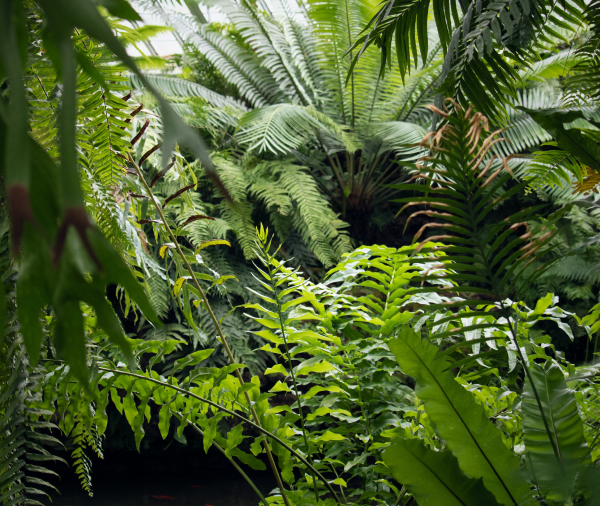
Carbon is a greenhouse gas and human activity has massively increased the amount of carbon being put into our atmosphere. This is causing our planet to overheat. 471 billion tonnes of carbon stored in tropical forests and tropical deforestation accounts for up to 15% of net global carbon emissions each year, because carbon is released when the trees are cut down (and even more so when they are burned). Keeping our forests intact is essential for us to stay on track with the UN targets for net zero by 2050.
A typical tree can sequester (or put another way, absorb) around 21 kilograms of carbon dioxide (CO2) per year, however this figure is only achieved when the tree is fully grown – saplings will absorb significantly less than this. Over a lifetime of 100 years, one tree could absorb around a tonne of CO2. This is why protecting mature rainforest is far more impactful than planting new trees.
Hundreds of indigenous communities globally have no recognized ownership rights and their lands are under tremendous pressure from logging, agro-industries and colonists. Without the titles to their territories, native communities have no legal instrument to defend these lands from activities like logging and agricultural expansion. Granting communities rights to their land not only supports the survival of their society, but also provides legal protection to ensure that any encroachment on the land can be prevented under law!
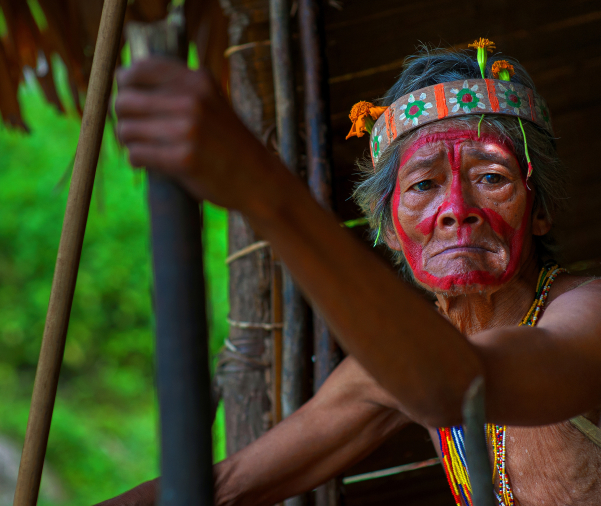
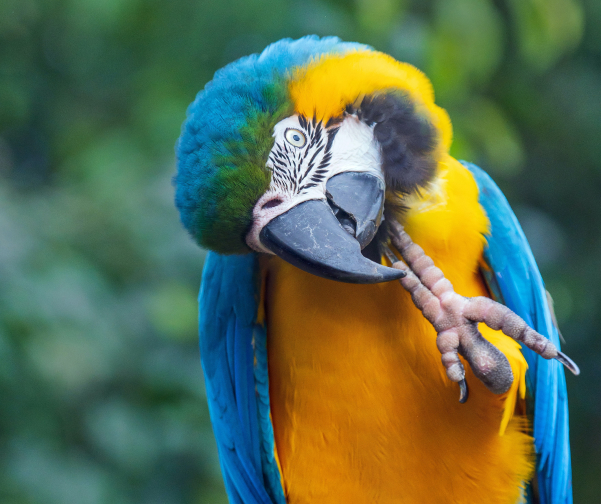
We are currently in the midst of an extinction event called the Holocene or the Anthropocene Extinction. It is essential that we do everything in our power to save the incredible flora and fauna we share the planet with. Tropical rainforests are the single most biologically diverse terrestrial ecosystems in the world. The Amazon rainforest alone is home to around 4,000 plant species, nearly 1,300 bird species, 3,000 types of fish, 427 species of mammal and 2.5 million different insects.
In 2021 One Tribe are proud to have provided funding for 9 rainforest protection projects in partnership with The Rainforest Trust:
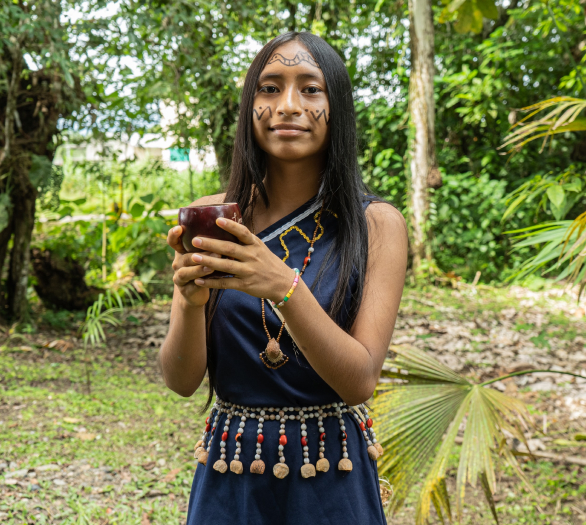
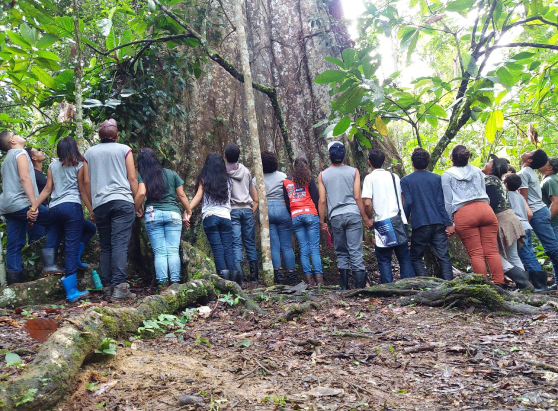
Protect biodiverse Atlantic Forest in Brazil’s Serra Bonita Mountain Range
Brazil’s Serra Bonita Mountain Range, nestled within the country’s threatened Atlantic Forest, is home to a wide range of unique species. Seventy endemic bird species reside within these mountains––like the Banded Cotinga, Buff-throated Purpletuft, Rufous-brown Solitaire and Bahia Tyrannulet–– making it an internationally recognized Important Bird Area (an area identified using an internationally agreed set of criteria as being globally important for the conservation of bird populations). Primate species like Buff-headed Capuchins, Golden-headed Lion Tamarins, Black-handed Titis and Wied’s Marmosets also rely on these slopes.
Bajo Paragua forest
2,054,193
Crowned Solitary Eagle (EN), Amazon River Dolphin (EN), Black-faced Black Spider Monkey (EN), Umburana Do Cheiro (EN) Giant Otter (EN), Tapir (VU) and Jaguar (VU)
(CR)=Critically Endangered, (EN)=Endangered, (VU)=Vulnerable
Conservation Area Designation
Fundación Natura Bolivia / Rainforest Trust
354,251,601 mT*
*(metric tonnes of CO2 equivalents)
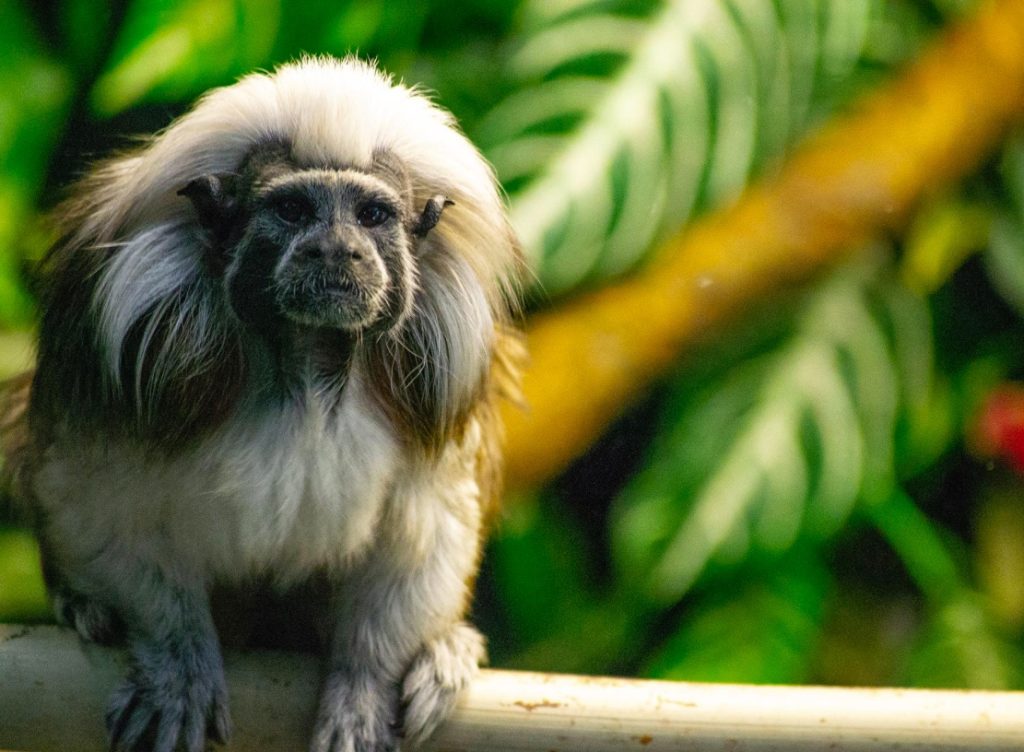
Expanding the Los Tities de San Juan Reserve
To help secure forest habitat for the Cotton-top Tamarin, Rainforest Trust’s local partner, Fundación Proyecto Tití worked to protect land that was in danger of becoming a cattle ranch and established Los Titíes de San Juan Reserve in 2015. Two years later in 2018, our two organizations teamed up to double the size of the reserve. And now, we hope to continue this expansion by an additional 110 acres. The new site is another strategic step to creating corridors that connect forest fragments to existing protected areas in the region so these small primates can thrive.
Colombia – Los Tities
110.28
Cotton-top Tamarin (CR), Dahl’s Toad-headed Turtle (CR), Brown-headed Spider Monkey (CR), Peroba Rosa (EN)
(CR)=Critically Endangered, (EN)=Endangered, (VU)=Vulnerable
Purchase
Fundación Proyecto Tití
9,900 mT*
*(metric tonnes of CO2 equivalents)
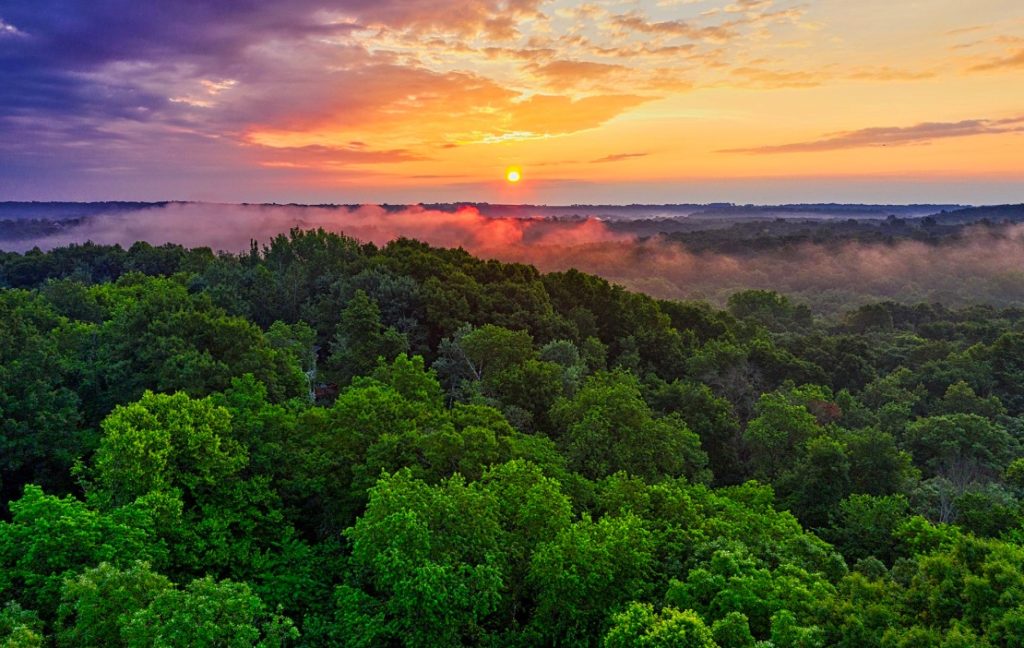
Protecting Indigenous Tribal land in the Peruvian Amazon
The Amazonia is most biodiverse biome in the planet, with diversity hotspots occurring in the western part of the Amazon basin (also known as Andes-Amazonia).
Through this ambitious conservation initiative, protection will span five different and threatened ecoregions: Ucayali moist forests, Napo moist forests, Southwest Amazon moist forests, Iquitos Varzea and Solimoes Japurá moist forests. The project site is located in the southern part of Loreto and throughout the Ucayali Region all the way to the foothills of the Andes. Many threatened species are dependent on the project site, including primates such as the Endangered White-bellied Spider Monkey and Black-faced Black Spider Monkey, large mammals such as the Endangered Giant Otter and Vulnerable Lowland Tapir, and reptiles such as the Vulnerable Yellow-footed Tortoise and Yellow-spotted River Turtle.
Loreto and Ucayali Regions
6,102,946
Black-faced Black Spider Monkey (EN), Giant Otter (EN), White-bellied Spider Monkey (EN)
(CR)=Critically Endangered, (EN)=Endangered, (VU)=Vulnerable
Land Titling for Indigenous Communities
CEDIA / Rainforest Trust
1,135,860,000 mT*
*(metric tonnes of CO2 equivalents)
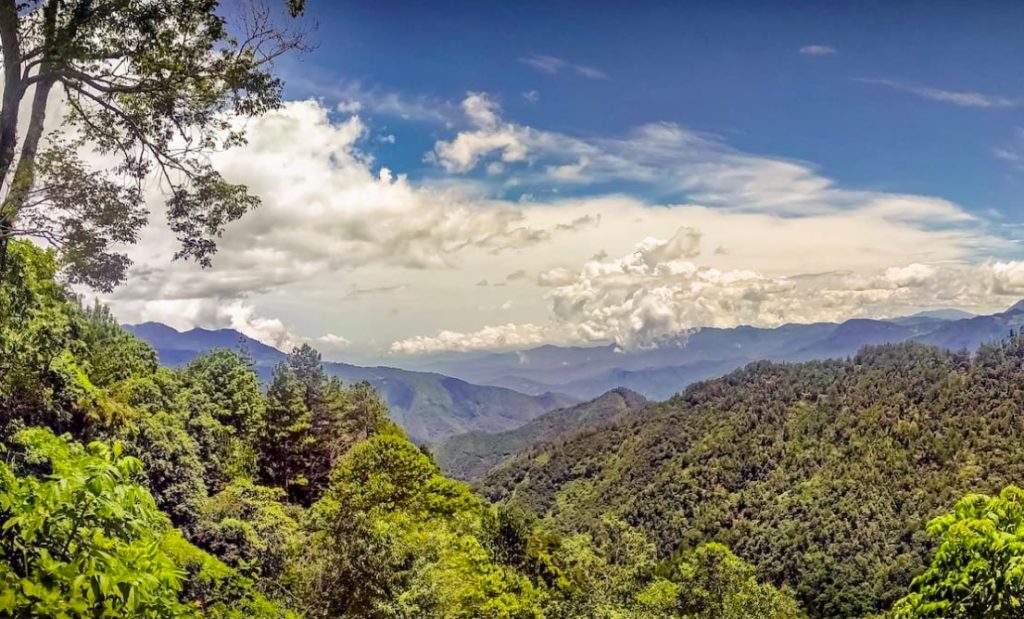
Protecting key biodiversity areas in Mexico
The Monarch Corridor boasts high levels of biodiversity and endemism because it contains habitat ranging from desertic and sub-montane shrublands to tropical forests.
The proposed protected area intersects four Key Biodiversity Areas and will provide a fundamental corridor for 281 bird species, including the Yellow-headed Amazon (EN), Maroon-Fronted Parrot (EN) and Red-Crowned Amazon (EN). The IUCN Red List estimates the Red-crowned Amazon population has declined by over 75% in 30 years due to poaching and habitat loss.
132 mammal species will also benefit from this protection, including the magnificent Jaguar, as well as 45 amphibians, and 142 reptiles inhabit the area (109 of which are considered endemic either to the country or the state). Over 4,000 plant species–– including the Critically Endangered cactus Mammilaria carmenae and Endangered Mesoamerican Yew.
Sierra Madre Oriental mountain range
1,487,748
Mammillaria Carmenae (CR); Chaney’s Spiny Lizard (EN); Dennis’ Chirping Frog (EN); Red-crowned Amazon (EN); Tamaulipan Woodrat (EN); Yellow-headed Amazon (EN)
(CR)=Critically Endangered; (EN)=Endangered
Conservation Area Designation
Pronatura Noreste / Rainforest Trust
44,816,160 mT*
*(metric tonnes of CO2 equivalents)
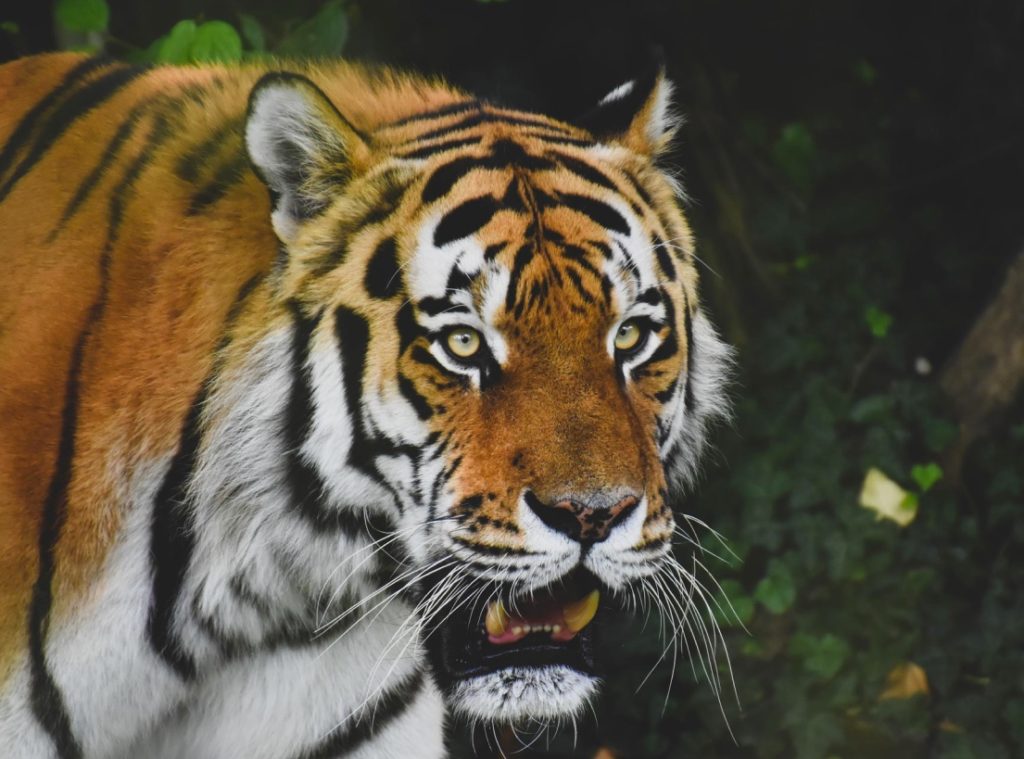
Protect the Leuser Ecosystem on the island of Sumatra
Our conservation partner Forum Konservasi Leuser (FKL) has been working with Rainforest Trust since 2016 to protect a critical portion of the Leuser. Our partners now seek to build on that success safeguarding 2,472 acres of land, bringing the total land protected to 4,000 acres.
By securing and recovering the original ecology, an Asian Elephant population will be able to migrate to its rich riparian lowlands to feed, and further south of the valley to reconnect with the Asian Elephants of the neighbouring Bengkung Basin. Through acquiring this land, FKL will extend a protected wildlife corridor vital to these and other threatened species.
Leuser Ecosystem
2,472
Sumatran Orangutan (CR), Sumatran Tiger (CR), Helmeted Hornbill (CR), Asian Elephant (CR), Siamang (EN), White-handed Gibbon (EN), Otter Civet (EN), Hairy-nosed Otter (EN), Storm’s Stork (EN), White-winged Duck (EN), Masked Finfoot (EN)
(CR)=Critically Endangered, (EN)=Endangered, (VU)=Vulnerable
Purchase
Forum Konservasi Leuser (FKL)
349,413 mT*
*(metric tonnes of CO2 equivalents)
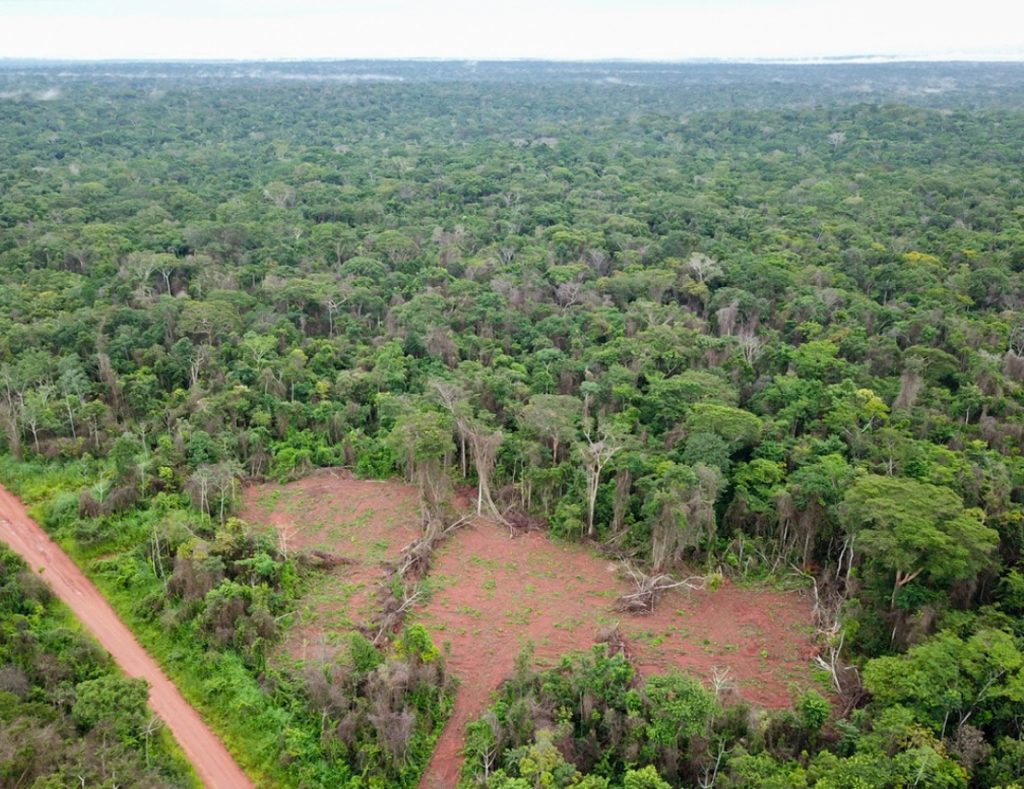
Stopping Deforestation at the Edge of the Bolivian Amazon
Urgent action is required to save the remaining forest. By helping us create the San Ignacio and Concepcion Municipal Protected Areas, your support will provide new long-term legal protection to the Bajo Paragua Forest.
Our partner’s top priority will be to work closely with the Guarasug’we to take back control of their land and forest to preserve their culture. Helping the Guarasug’we communities to fight wildfires is also critical for the protected area management, they will be provided annual training ahead of each fire season and equipped with water tanks and hoses.
Bajo Paragua forest
2,054,193
Crowned Solitary Eagle (EN), Amazon River Dolphin (EN), Black-faced Black Spider Monkey (EN), Umburana Do Cheiro (EN) Giant Otter (EN), Tapir (VU) and Jaguar (VU)
(CR)=Critically Endangered, (EN)=Endangered, (VU)=Vulnerable
Conservation Area Designation
Fundación Natura Bolivia / Rainforest Trust
354,251,601 mT*
*(metric tonnes of CO2 equivalents)
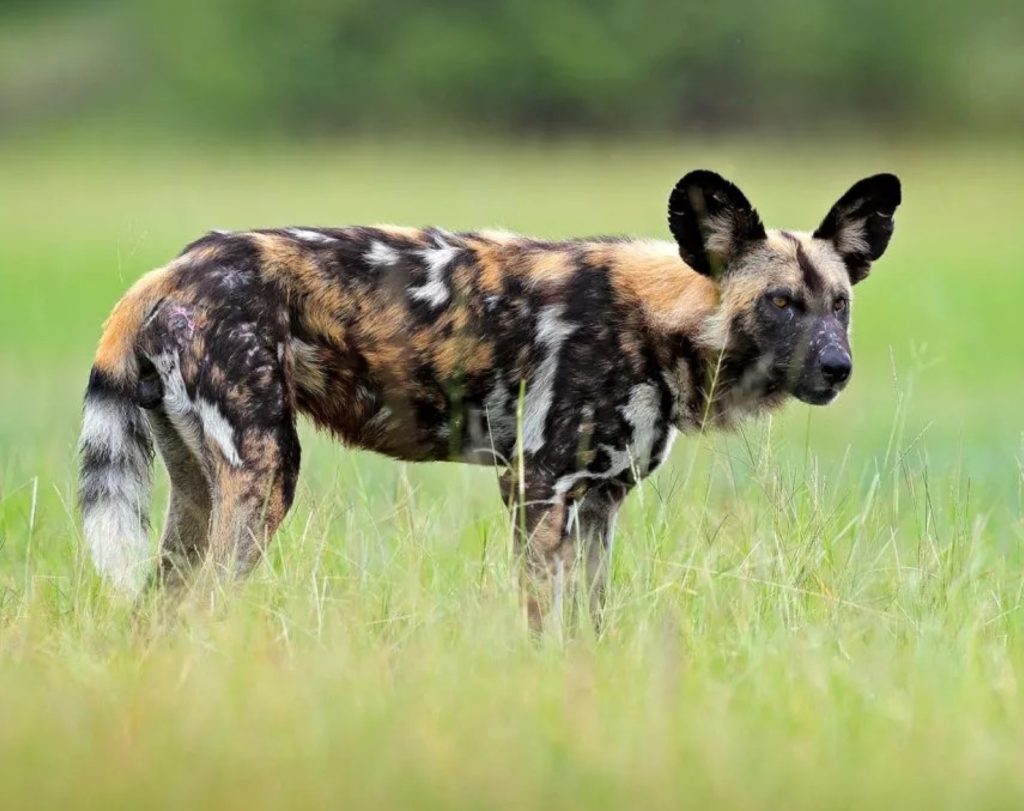
Expanding Gorongosa Restoration Project
Gorongosa National Park is a wildlife sanctuary to the south of The Great African Rift Valley. Without urgent intervention, this conservation treasure will be lost forever. So, thanks to an enormous amount of planning, teamwork and commitment, intervene we shall – we just need your help to do it. Our conservation partners aspire to make it home to one of the highest densities of endangered and vulnerable species on the continent, including African Buffalo, African Wild Dogs, African Elephants, Lions and Hippopotamus.
Mozambique
1,183,737
White-headed Vulture (CR), White-backed Vulture (CR), Largetooth Sawfish (CR), Green Sawfish (CR), Grey Crowned Crane (EN), Bateleur (EN), African Wild Dog (EN), African Elephant (EN)
(CR)=Critically Endangered; (EN)=Endangered
Conservation Area Designation
Gorongosa Restoration Project
53,995,571 mT*
*(metric tonnes of CO2 equivalents)
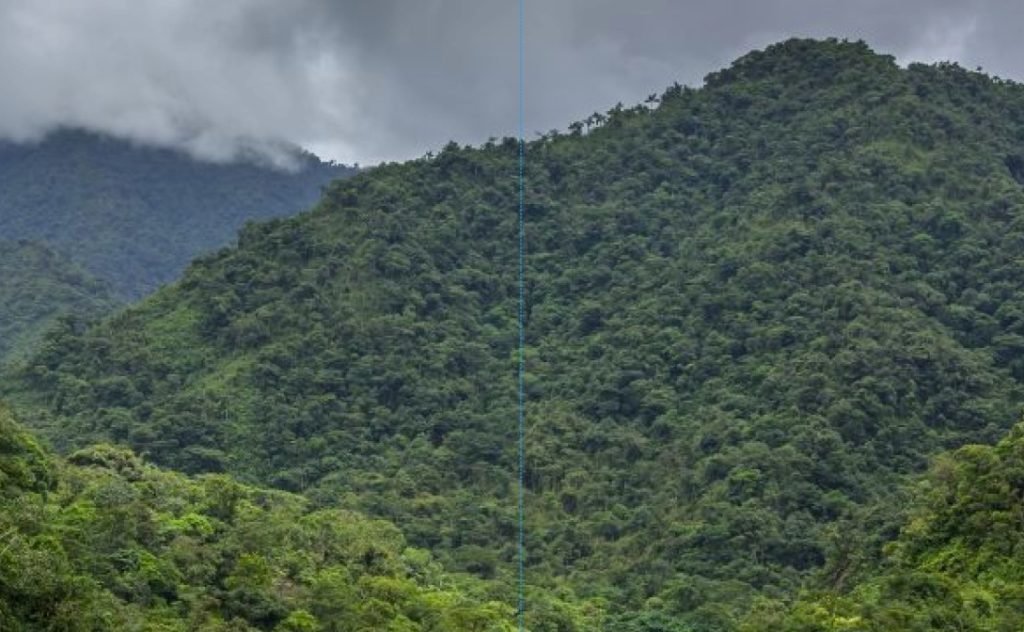
A Thriving Sanctuary for Endangered Species
The destruction of these forests releases millions of tons of carbon and threatens the only home of the who have lived there for generations. In addition, species like the endemic Peruvian Yellow-tailed Woolly Monkey (CR) and Andean Night Monkey (EN), who rely on high-elevation forests for survival are put at serious risk of extinction.
To prevent further damage and safeguard this ecosystem in perpetuity, One Tribe is working with our local partner, Yunkawasi, to establish a 130,337-acre protected area in the Toldopampa Cloud Forest. If we do not act quickly, the site will soon become heavily populated and the land will be lost forever.
Toldopampa, Peru
130,337
Peruvian Yellow-tailed Woolly Monkey (CR), Andean Night Monkey (EN), Black-faced Black Spider Monkey (EN)
(CR)=Critically Endangered; (EN)=Endangered
Designation
Yunkawasi
15,437,299 mT*
*(metric tonnes of CO2 equivalents)
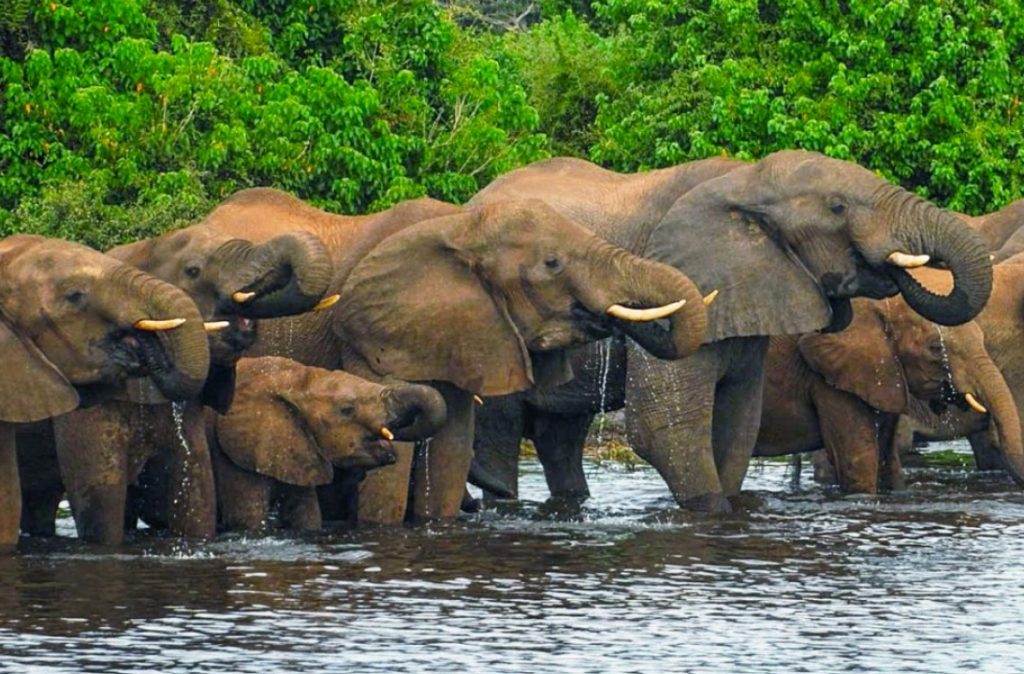
Protect Africa’s Biodiversity Hotspot
Eastern Democratic Republic of Congo is covered with dense tropical rainforest. These forests are home to a number of critically endangered species like Chimpanzees, Grauer’s Gorillas and the newly recognized African Forest Elephants.
The project is a “carbon vault” which stores huge amounts of carbon within the wood and roots. It is essential that this carbon stays locked up, ensuring that it is not released into the atmosphere. Once fully protected, a total of 195,501,690 metric tonnes of CO2 equivalents (equivalent to the annual energy emission of every home in California and Texas combined) will be secured and will be safely stored in the rainforest, where it belongs.
Eastern Democratic Republic of Congo
769,543
Hooded Vultures (CR), Grey Parrots (EN), Congo Bay-owls (EN), Steppe Eagles (EN) and Shelley’s Crimsonwing (EN)
(CR)=Critically Endangered; (EN)=Endangered
Designation
Strong Roots
195,501,691 mT*
*(metric tonnes of CO2 equivalents)
Check out below the locations for all of the projects One Tribe helped to fund in 2021!
One Tribe measures the impact of the brands we work with, and the collective impact of the tribe. We measure a number of different metrics which are then shared on each brand’s impact page, and we track the collective impact on our site.
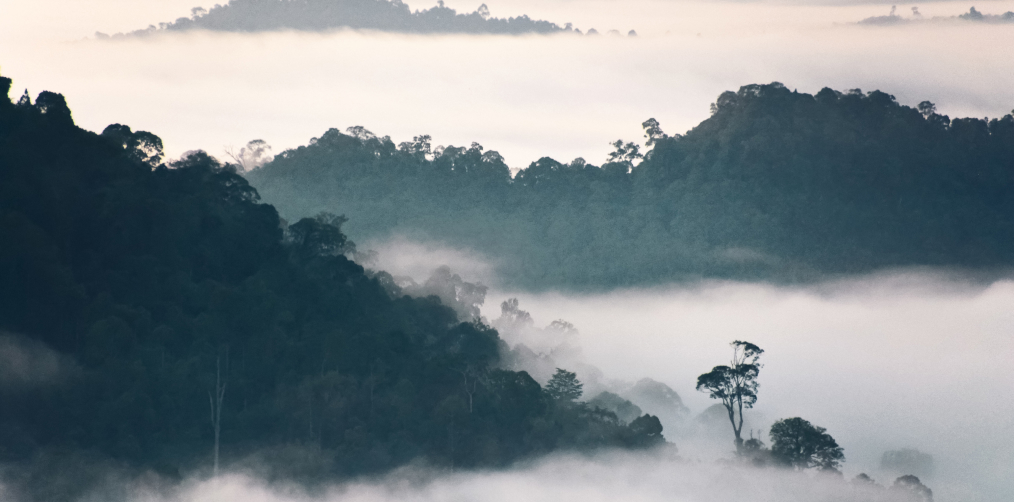
On average, a car produces 4.7 tonnes of carbon per car per year. This means that each acre of rainforest protected stores the same amount of carbon as 21.1 cars produce in one year!
This is the primary measure of the rainforest One Tribe protects. For comparison, an acre covers an area the size of 16 tennis courts. All of the other statistics we calculate start with the number of acres, and it is the key measure with both the Rainforest Trust and the projects we fund.
We measure trees that are more than 10cm in diameter at chest height (or 1.35m up from the ground). On average there are 5 trees per 100 sqm (only counting the most mature trees in the emergent layer). This enables us to measure and report the carbon stored with greater accuracy. We then verify the calculations to confirm they match peer reviewed and industry standard rainforest density and carbon sequestration analysis reports.
We have worked closely with the Rainforest Trust on the environmental impact of rainforest protection. We select projects with them that have a high carbon storage rate, and the rainforest we protect stores 99.4 metric tonnes of carbon per acre. Around 50% of trees are carbon and there are around 471 billion tonnes of carbon stored in tropical forests!
One Tribe is working with the United Nations Framework For Climate Change. The SDGs are a set of 17 goals with 169 targets covering a broad range of sustainable development issues. There are 6 main goals that we support through our partnerships, projects and platform:
Protecting Indigenous Tribes in the rainforests helps them remain on their land, as they have always done. This prevents indigenous displacement, without the opportunities or resources to support themselves, into nearby towns and cities, enabling tribes to live off the land as they have done for centuries. Goal 1 highlights poverty and the fact that it has many dimensions. Main causes include unemployment, social exclusion, and high vulnerability of certain populations to disasters, diseases and other phenomena which prevent them from being productive. Growing inequality is detrimental to economic growth and undermines social cohesion, increasing political and social tensions and, in some circumstances, driving instability and conflicts.
The world’s oceans – their temperature, chemistry, currents and life – drive global systems that make the Earth habitable for humankind. Our rainwater, drinking water, weather, climate, coastlines, much of our food, and even the oxygen in the air we breathe, are all ultimately provided and regulated by the sea. Throughout history, oceans and seas have been vital conduits for trade and transportation. Mangroves are trees and shrubs that live on the boundary between land and water and are key habitats for a number of species, but also stabilize shorelines and help to regulate CO2 levels in the water. A number of our projects have land-based forests and mangroves which means we are supporting multiple habitats at once!
Preventing displacement is key to creating sustainable communities. Enabling people to continue to live on their ancestral lands in a sustainable way. Many of the projects that One Tribe support create land titles for indigenous people, that give them the legal right to stay living on their land in a sustainable way without the threat of deforestation.
Collaboration is going to be key to success with the Sustainable Development Goals. The more consumers and organisations can come together to align their efforts and work towards a shared set of goals, the more likely we will be to succeed. We are called One Tribe for a reason - to emphasise our ability to achieve more as a group than we can as individuals.
Climate change is now affecting every country on every continent. It is disrupting national economies and affecting lives, costing people, communities and countries dearly today and even more so tomorrow. Weather patterns are changing, sea levels are rising, weather events are becoming more extreme and greenhouse gas emissions are now at their highest levels in history. Without action, the world’s average surface temperature is likely to surpass 3 degrees centigrade this century. The poorest and most vulnerable people are being affected the most. Protecting forests is key to locking in stored carbon, and continuing to absorb carbon from the atmosphere - they are the natural solution to absorbing and storing carbon!
Forests cover 30.7 percent of the Earth’s surface and, in addition to providing food security and shelter, they are key to combating climate change, protecting biodiversity and the homes of the indigenous population. By protecting forests, we will also be able to strengthen natural resource management and increase land productivity. Each One Tribe rainforest protection project shows which animals live in the region and their current status as either Critically Endangered, Endangered or Vulnerable.
Acres Saved
Tonnes of Carbon Stored

Acres Saved
Tonnes of Carbon Stored
Acres Saved
Tonnes of Carbon Stored
Acres Saved
Tonnes of Carbon Stored
Acres Saved
Tonnes of Carbon Stored

Acres Saved
Tonnes of Carbon Stored
Acres Saved
Tonnes of Carbon Stored
Acres Saved
Tonnes of Carbon Stored

Acres Saved
Tonnes of Carbon Stored
Acres Saved
Tonnes of Carbon Stored
Acres Saved
Tonnes of Carbon Stored
Acres Saved
Tonnes of Carbon Stored
Acres Saved
Tonnes of Carbon Stored
Acres Saved
Tonnes of Carbon Stored
Acres Saved
Tonnes of Carbon Stored
Acres Saved
Tonnes of Carbon Stored
Acres Saved
Tonnes of Carbon Stored

Acres Saved
Tonnes of Carbon Stored

Acres Saved
Tonnes of Carbon Stored
Acres Saved
Tonnes of Carbon Stored

Acres Saved
Tonnes of Carbon Stored

Acres Saved
Tonnes of Carbon Stored

Acres Saved
Tonnes of Carbon Stored

Acres Saved
Tonnes of Carbon Stored

Acres Saved
Tonnes of Carbon Stored

Acres Saved
Tonnes of Carbon Stored

Acres Saved
Tonnes of Carbon Stored
Acres Saved
Tonnes of Carbon Stored
Acres Saved
Tonnes of Carbon Stored
Acres Saved
Tonnes of Carbon Stored
Acres Saved
Tonnes of Carbon Stored
Acres Saved
Tonnes of Carbon Stored
Acres Saved
Tonnes of Carbon Stored
Acres Saved
Tonnes of Carbon Stored
Acres Saved
Tonnes of Carbon Stored

Acres Saved
Tonnes of Carbon Stored
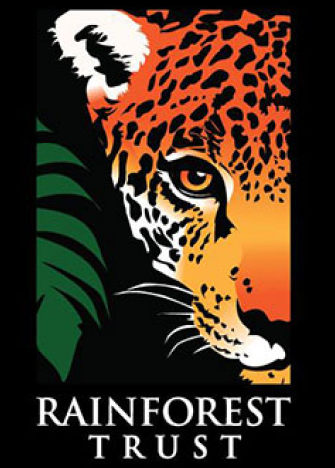
I would like to offer my personal and heartfelt thanks to One Tribe and their clients for supporting our vital mission to protect threatened rainforests throughout 2021.
I would like to offer my personal and heartfelt thanks to One Tribe and their clients for supporting our vital mission to protect threatened rainforests throughout 2021.
One Tribe have been Rainforest Trust Conservation Circle members for many years now, and are considered to be one of our most passionate and committed business partners. Their regular monthly donations have protected thousands of acres of threatened rainforests across the tropics, helping Rainforest Trust to save endangered species and fight climate change.
The Tribe is growing, and we look forward to saving more rainforest and storing more carbon with you in 2022.
One Tribe have been Rainforest Trust Conservation Circle members for many years now, and are considered to be one of our most passionate and committed business partners. Their regular monthly donations have protected thousands of acres of threatened rainforests across the tropics, helping Rainforest Trust to save endangered species and fight climate change.
The Tribe is growing, and we look forward to saving more rainforest and storing more carbon with you in 2022.

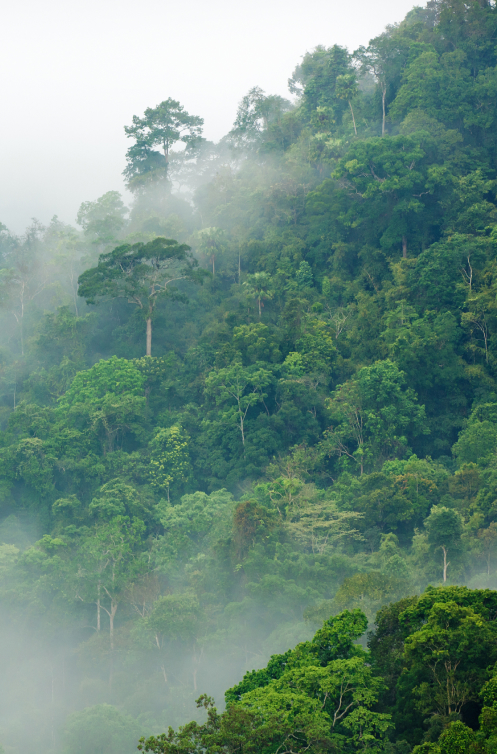
To reach 1,000 brands globally saving trees through their eCommerce store
To enable more than 1 million customers to buy more sustainably from climate positive brands
To calculate and share the carbon sequestered each year by the rainforest we protect, as well as the carbon stored
To expand the types and scale of the forest projects we support to continue to grow our impact across the globe
To play a leading role in the global movement of businesses working together as one tribe to protect our planet for future generations
https://www.rainforesttrust.org/saving-endangered-species/
https://www.theguardian.com/environment/2021/nov/04/reality-check-global-co2-emissions-shooting-back-to-record-levels#:~:text=The%20GCP%20report%20was%20produced,fall%20of%205.4%25%20in%202020
https://www.researchgate.net/publication/254774213_A_spatial_model_of_tree_alpha-diversity_and_tree_density_for_the_Amazon
One Tribe is a Climate Action Platform enabling businesses and their customers to make a positive environmental impact.
Eric currently works as an independent consultant at the intersection of nature and climate, focused on catalysing market and non-market solutions to drive the just transition.
He previously was Head of Product at Earthshot Labs, supporting nature conservation and restoration projects across the global south secure project finance. Prior to Earthshot Labs, Eric led nature-based carbon project development for Gorongosa National Park in Mozambique and founded the Carbon Cooperative, a global alliance of leading nature conservation and restoration practitioners exploring carbon finance. After serving in the Peace Corps in Mozambique out of university, he spent much of his 20s working in community-based conservation and ecosystem restoration efforts in Sub-Saharan Africa interspersed with two startup ventures as co-founder and CEO of a mental health tech startup and COO of a sustainable coffee company. Eric has a dual Masters in Environmental Engineering and Environmental Policy from Stanford University where he was a NSF Graduate Research Fellow and a BS in Environmental Engineering from Tufts University.
Alan is a risk management thought-leader, superconnector, and FinTech pioneer. His mission is to enable an Earth Positive economy which includes nature in global accounting systems.
Alan is Founder of Generation Blue, a venture studio dedicated to planetary game changers powered by exponential technologies. Previously, Alan established Natural Capital Markets at Lykke AG, pioneering blockchain based forestry and carbon backed tokens. Alan has over two decades of risk management experience advising global financial institutions, and was a founding member of the RiskMetrics Group, a JPMorgan spin-off. Alan is an investor and advisor to regenerative impact ventures, including TreeBuddy.Earth, Regenativ, and Vlinder Climate.
Lori Whitecalf made history when she became the first woman to be elected Chief of Sweetgrass First Nation in 2011. She served three terms of office from 2011-2017.
Lori took a two-year hiatus from leadership to expand the family ranch and serve as the FSIN Senior Industry Liaison. She was re-elected on November 29. 2019 and again on November 30, 2021, as Chief of Sweetgrass. Chief Whitecalf practises a traditional lifestyle of hunting, fishing and gathering. She currently sits on the following boards: Saskatchewan Indian Institute of Technology, FSIN Lands and Resource Commission, Battle River Treaty 6 Health Centre and Battleford Agency Tribal Chiefs Executive Council, FSIN Women’s Commission.
Tina is the Chief Business Officer for MLTC Industrial Investments, the Economic Development arm of the Meadow Lake Tribal Council. She has a diverse background of experience. Having spent 15 years as a municipal Chief Operating Officer, 20 years involved in Saskatchewan’s Health Authority Board Keewatin Yatthe and 9 years with Northern Lights Board of Education.
She continues as a Board Member with Beaver River Community Futures supporting small business development in her home region. Tina brings a wealth of experience in a variety of fields and many connections to the Indigenous communities of Northern Saskatchewan. In addition Tina holds a BA Advanced from the U of S, a Certificate in Local Government Authority from the U of R and is certified as a Professional Economic Developer for Saskatchewan and a certified Technician Aboriginal Economic Developer (TAED).
Tootoosis’ career spans 40+ years in HRM, political leadership, and Indigenous economic development, as a dedicated bridge builder and advocate for Indigenous causes.
As a key member of the Saskatoon Regional Economic Development Authority (SREDA) team since 2021, he develops strategies for the Truth and Reconciliation Commission final report and Call to Action #92.
He is a graduate of the First Nations University of Canada and a certified Professional Aboriginal Economic Developer. Spearheading various community initiatives while serving as a Chair of the SIEDN while directing ILDII and WIBF. Founder of MGT Consulting Tootoosis is based in Saskatoon, Treaty Six Territory.
Cy Standing (Wakanya Najin in Dakota) has a long and distinguished career including serving overseas as an Electronics Technician in the Royal Canadian Air Force, former Chief of Wahpeton Dakota Nation, former Vice Chief of the Federation of Saskatchewan Indigenous Nations (FSIN), past Executive Director of Community Development Branch of the Department of Northern Saskatchewan as well as an Order in Council appointment to the Federal Parole Board.
Mr. Standing has served as a Director on many Profit and Non-Profit Corporate Boards, including serving as a Director for Affinity Credit Union with assets of over six billion dollars as well as IMI Brokerage and Wanuskewin and is currently a member of the One Tribe Indigenous Carbon Board.